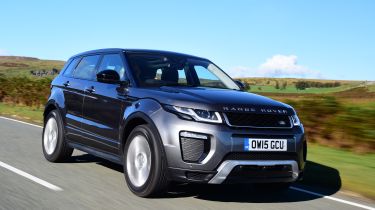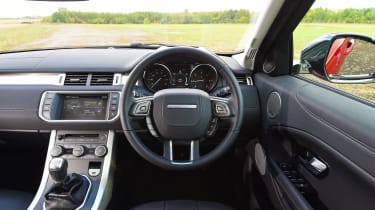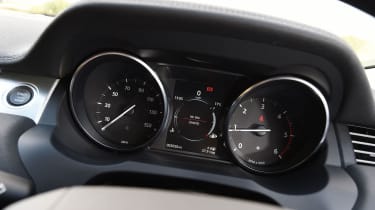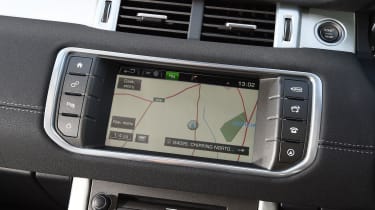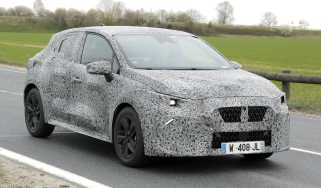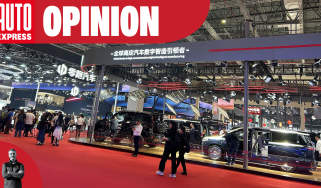Range Rover Evoque (2011-2018) review - Interior, design and technology
Functional and classy, the Evoque has a very premium cabin, but the sat nav system still lags behind

When the Evoque was launched in 2011, it caused a major stir in the crossover class, and even after four years in dealers and thousands of cars sold, its concept car looks still manage to turn heads. The slab sides and small windows mean it appears sportier than the Q3, even though it’s taller, while the black window pillars and clamshell bonnet are a modern update to the traditional Range Rover look.
The Evoque was facelifted in 2014, but it kept its overall styling the same. However, the line-up has been expanded with new interior and exterior colours, new trims and a subtly redesigned badge on the boot lid and grille; and for the 2017 model, there were some infotainment upgrades, too.
The range-topping Autobiography model features vast 20-inch wheels that fill the arches, but if you go for the entry-level SE model, it has 18-inch wheels that look a little lost next to all the black plastic trim adorning the exterior.
Up front, the rounded nose features a slender grille and light clusters, but you only get halogen bulbs as standard on the most basic cars. To get Xenons with distinctive LED running lights or full LED lamps, you'll need to go for a higher trim level aren’t even offered. At the back, the tail-lights have a similar look to the front, while the high-set back bumper and low roof give a rakish stance.
Used - available now

2023 Land Rover
Range Rover Evoque
15,657 milesAutomaticPetrol1.5L
Cash £29,787
2023 Land Rover
Range Rover Evoque
25,977 milesAutomaticPetrol1.5L
Cash £24,400
2021 Land Rover
Range Rover Evoque
21,071 milesAutomaticDiesel2.0L
Cash £25,800
2023 Land Rover
Range Rover Evoque
20,595 milesAutomaticPetrol1.5L
Cash £24,700Inside, the Evoque has a classy layout that comes close to matching the Audi Q3 for quality. The cabin layout features chunky rotary controls and solid switches, plus a rotary gear selector and a bank of buttons to select the assorted drive modes for the Terrain Response system.
While the cabin looks good, it’s also pretty well equipped. You get heated leather seats as standard, and two-zone climate control is also included. Plus, there are plenty of extras you can add. A panoramic roof is just over £1000 (and standard on some upper trim levels), privacy glass is £375 and a heated steering wheel is £200 (or standard with Autobiography trim).
The Convertible’s cabin gets the same class and quality, and the roof mechanism is a doddle to use. You simply flick a switch and the mechanism can open up the cabin in just 18 seconds - and at speeds of up to 30mph.
Sat-nav, stereo and infotainment
One downside of Evoque ownership used to be that you had to use Land Rover’s rather dated infotainment system, which still lags behind BMW’s iDrive system for functionality. However a round of updates for the 2017 Model Year brought in JLR's InControl Touch and Touch Pro systems, which are much improved and feature HD graphics with pinch-to-zoom functionality.
The graphics are much better and the system itself is much easier to get along with, as there aren’t too many menus to go through to get to the different audio and climate settings. Rival systems are still more complete, but the Evoque's setup is better than ever.
Other interesting tech includes a Wi-Fi hotspot, which allows passengers inside the car to connect smartphones and laptops to the internet on the move.
